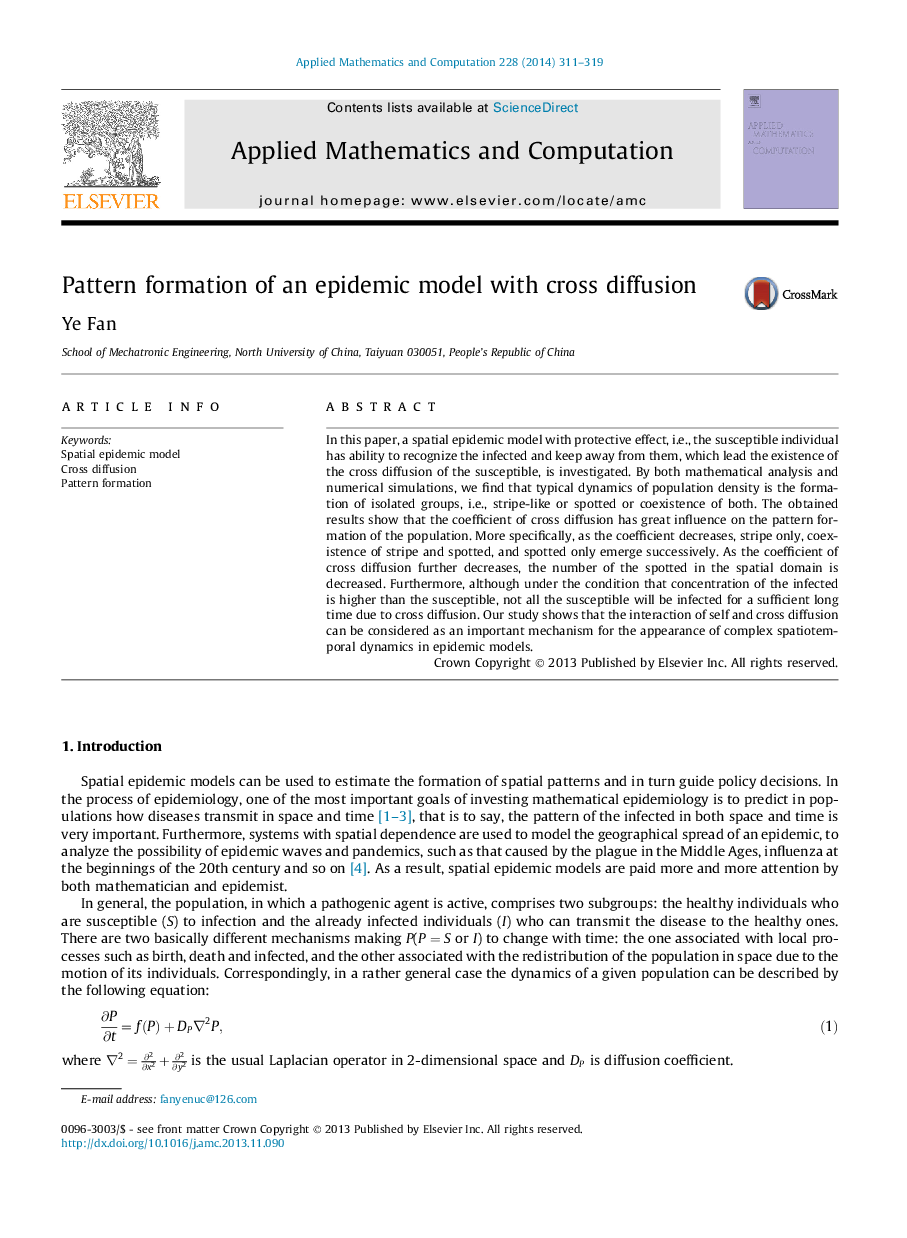| Article ID | Journal | Published Year | Pages | File Type |
|---|---|---|---|---|
| 4628340 | Applied Mathematics and Computation | 2014 | 9 Pages |
In this paper, a spatial epidemic model with protective effect, i.e., the susceptible individual has ability to recognize the infected and keep away from them, which lead the existence of the cross diffusion of the susceptible, is investigated. By both mathematical analysis and numerical simulations, we find that typical dynamics of population density is the formation of isolated groups, i.e., stripe-like or spotted or coexistence of both. The obtained results show that the coefficient of cross diffusion has great influence on the pattern formation of the population. More specifically, as the coefficient decreases, stripe only, coexistence of stripe and spotted, and spotted only emerge successively. As the coefficient of cross diffusion further decreases, the number of the spotted in the spatial domain is decreased. Furthermore, although under the condition that concentration of the infected is higher than the susceptible, not all the susceptible will be infected for a sufficient long time due to cross diffusion. Our study shows that the interaction of self and cross diffusion can be considered as an important mechanism for the appearance of complex spatiotemporal dynamics in epidemic models.
